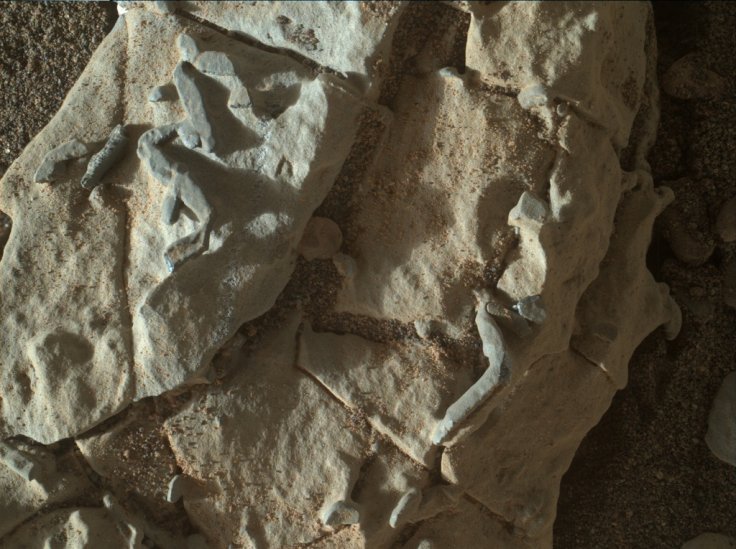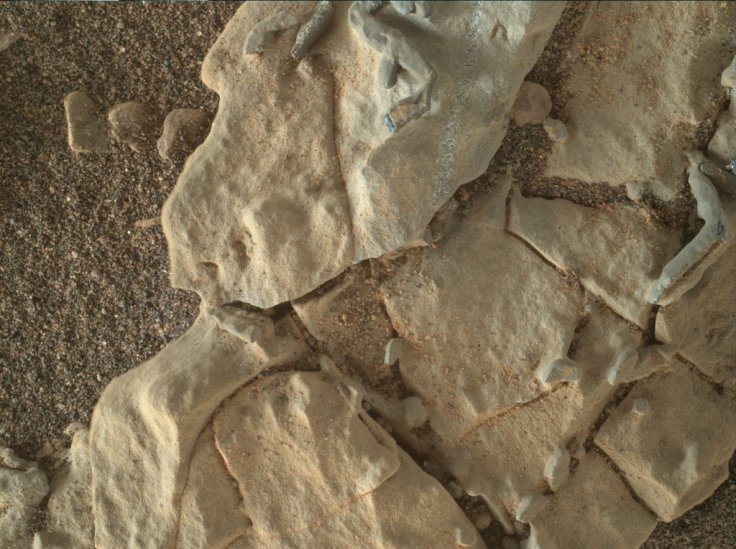
NASA's Mars Rover has captured images of the surface of the Red Planet with stick-like structures which look remarkably like fossils discovered on Earth. Scientists claim that this could be a definitive indication that life exists or had once existed on our neighbouring planet.
The photographs sent back by the Curiosity Mars Rover Lens Imager (MAHLI) may show trace fossils on the planet, says research fellow at the Buckingham Centre for Astrobiology in the UK Barry DiGregorio, who is the author of several research papers on Mars and two non-fiction books: "Mars: The Living Planet" and "The Microbes of Mars".
The scientist says that the pictures depict structures similar to the Ordovician trace fossils that he has photographed and studied. He wonders what other explanation NASA can provide about this strange discovery.
Meanwhile, NASA is looking further into the images and trying to figure out what they can possibly be. The discussion started after Curiosity rover posted pictures of the discovery on Mars.
Curiosity project scientist Ashwin Vasavada says that the features captured on the Red Planet's surface are tiny, having one to two millimetres of width. The largest of them is five millimetres wide. Being first captured in black and white, it amazed the scientists so much that NASA sent the Curiosity back for further examination, reports Space.com.
Then MAHLI, a focusable colour camera on the Mars Rover, took colour photographs of the weird tube-like structures. Vasavada says that there is a possibility that these are fossils, but it would not be his first guess.
He added that the objects are angular and multi-dimensional, hinting at the possibility of them being rocks or crystals similar to the earthly ones. He seems to think that if more such objects are spotted on Mars, it may prove that an important discovery is to be made at the Vera Rubin Ridge, a site on Mars that the Curiosity has been exploring.
The site of the discovery is now being investigated by Curiosity's Chemistry and Camera (ChemCam) and its Alpha Particle X-Ray Spectometer (APXS) for further clues.

Other assumptions about what these structures include the possibility of them being not being fossils but a result of bioturbation, the process by which organisms form burrows into the soil. Even if that is the case, some organism like a worm must have existed on the planet to form these structures.
Either way, this discovery has opened up a wide range of possibilities of life having existed on Mars. It is tough to decide whether human beings should be happy that they are not alone in this universe or afraid that aliens might come to invade our planet in the near future.









